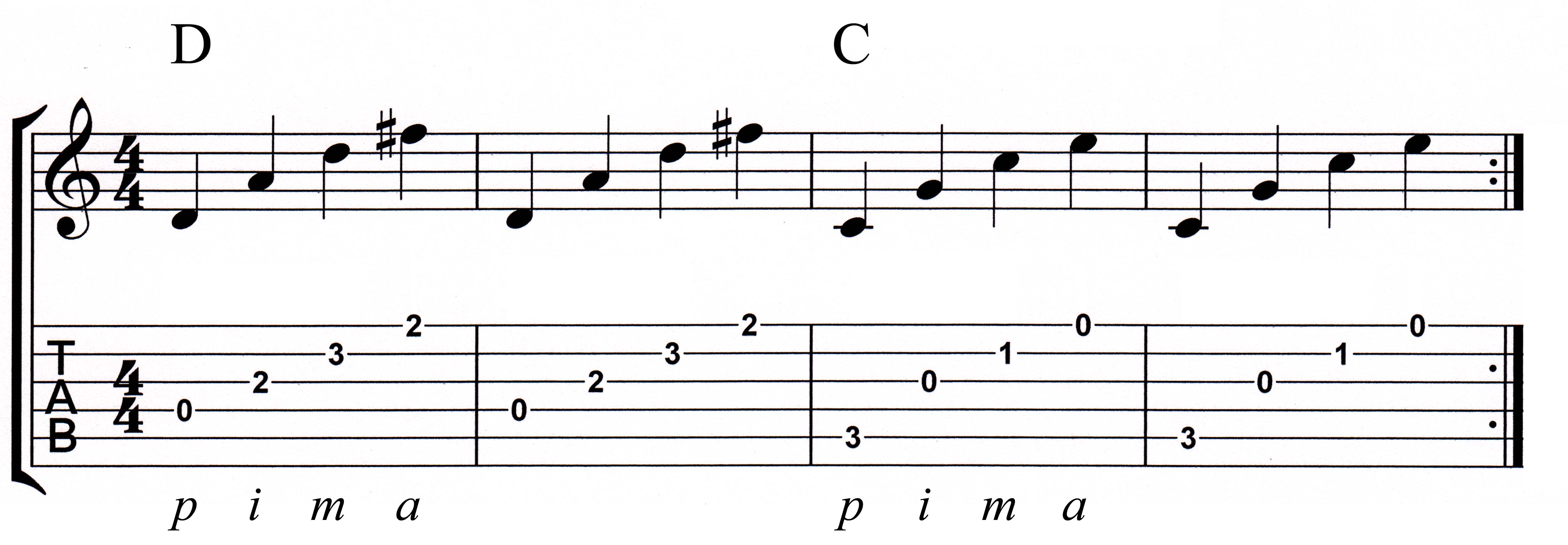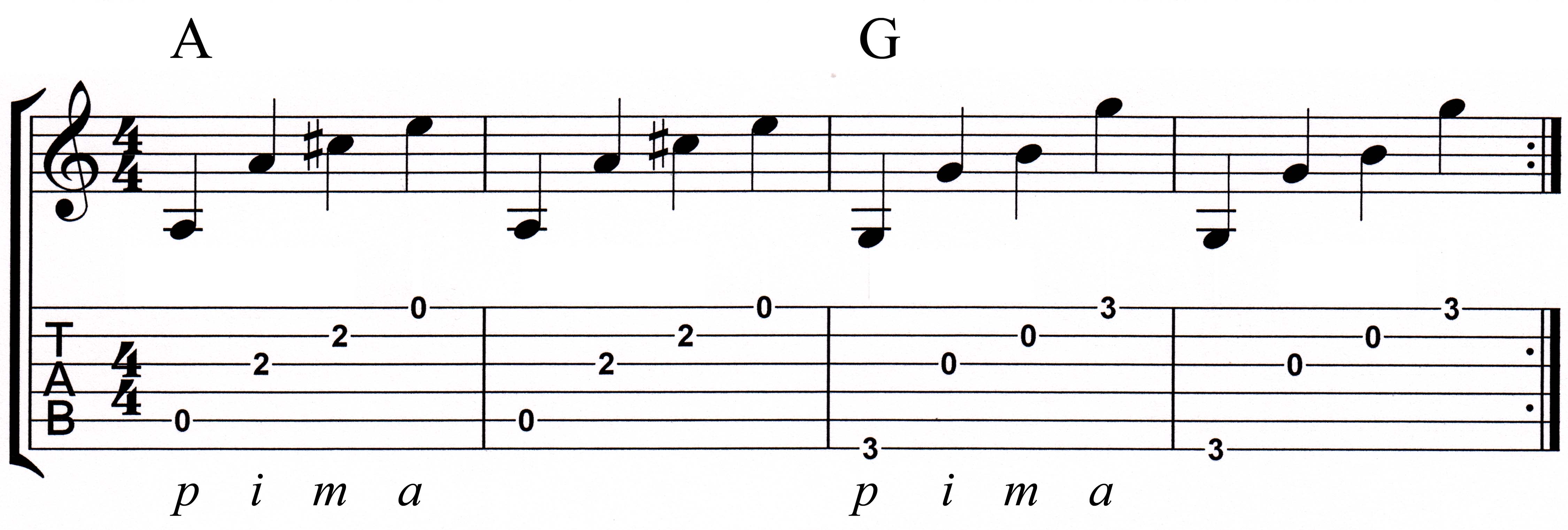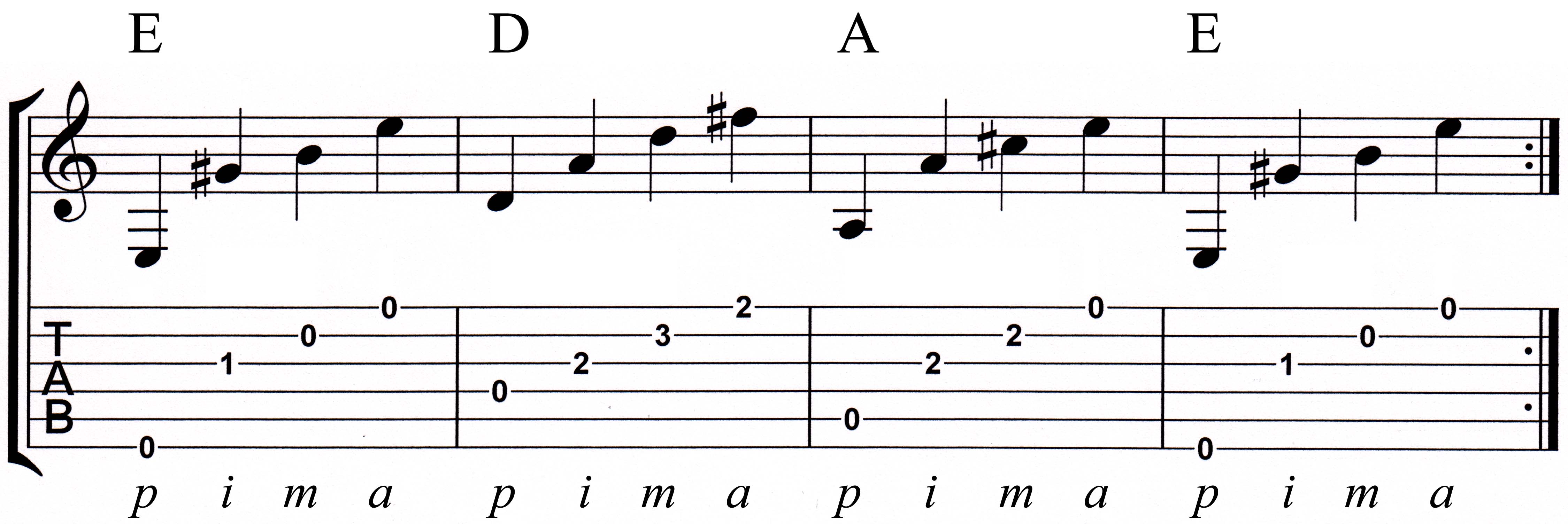
As you are moving from beginning to intermediate level, which is the function of this column - to re enforce what you should understand in the way of technique and
ability - it is important to cover the topic of finger picking. So the next two columns will be dealing with wading into that pool to help you see the benefits and
power that finger style playing can bring to the palate of colours and tones you can produce.
While you may have dabbled a little bit with the idea of finger picking, most guitar players - particularly electric guitar players - really don't pursue a well
rounded understanding and ability as finger style players. Much of the music being played on the radio is absent examples of truly accomplished finger style playing.
And that is a shame.
Therefore, we will not assume you have any understanding at all and start from the beginning. Even if you do know how to do this stuff, come along anyway because
you should confirm your knowledge and also stick around to learn stuff you probably don't know.
For the picking hand, there are some conventions we need to establish. Each digit is assigned a letter designation, and that is as follows:
The little finger is rarely used, but when it is, I believe the "y" designation is used. Don't quote me on this.
In the first graphic, below, simply play through the progression, following the fingering order given under the TAB. Note the root tone changes strings, but your
fingers will stay on the top three strings throughout.
p = thumb
i = index finger
m = middle finger
a = ring finger

As you gain more confidence in playing the progression, bring in a metronome and set the tempo to around 72 bpm, one click per note. Yes, it's slow. That's the point. You do not want to learn a technique only to destroy it because you never learned to execute it properly. Play slowly, nail it and then step up the tempo, but only by around 4 bpm at a shot. You don't want to speed up faster than your execution of good technique will allow. That's how you maintain good technique and permanently integrate it into your playing as you increase your dexterity and speed.
The next graphic is much the same, but with two different chords; the root changes strings and your fingers stay put on the top three strings again. Follow the same procedure as outlined above.

In the next graphic, you'll be playing a little more complex progression, moving the root tone on each chord and your fingers continuing to play the top three strings.

You are certainly welcome to play around with these ideas. These are jumping off points for you to explore other ideas based on what is presented for you to play. Always feel free to experiment. Always deviate from the path - but not until you fully grasp the lesson(s) as presented. It's easy to glean and fly off in your own direction. The danger is that you only learn a portion of what is needed to grow with a more solid foundation. Undermine that foundation and you will suffer the consequences later. Trust me on this.
The next graphic is a more fully realized progression similar to one you might encounter in your sonic journeys. Walk through it slowly and learn it well. Then bring in the metronome (as with any exercise) and get your timing and chord changes smooth and even. That is the critical element to all good playing: smooth and even execution and transitions from chord to chord.

From these four examples, you will begin to create a solid foundation for finger style approaches you might not otherwise consider. I have written songs one way and later, on a goof, decided to try playing in a different style, even without a pick, and found that a better reflection of the intent and character of the song. This can be applied to any song you are learning, not just compositional exercises. And I have taken popular songs and converted them to finger style arrangements to create a very effective interpretation that people found quite enjoyable.
When you recognize the near unlimited potential of what the guitar is capable of, and seek to embrace some - if not all - approaches beyond what is comfortable, you will expand your horizons, understanding, and your capabilities. And that is the essence that describes many guitar players around the world, to strive "onward and upward"!
Okay, now shut off your computer and go play with some ideas.
See you next time.